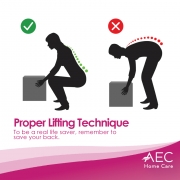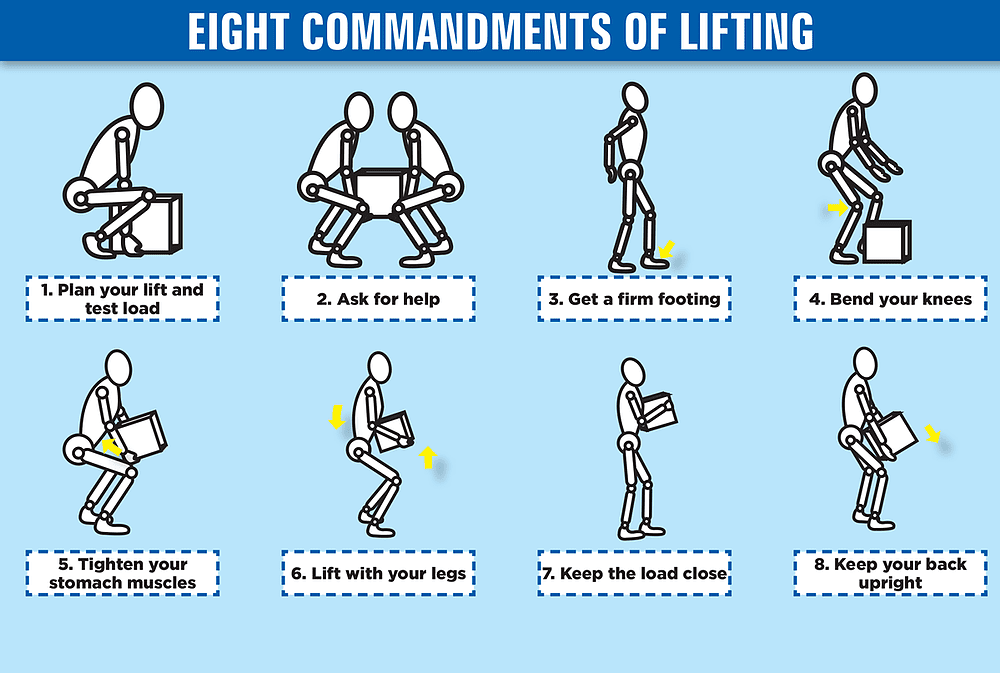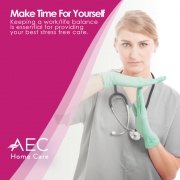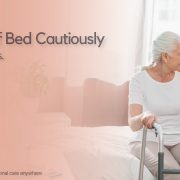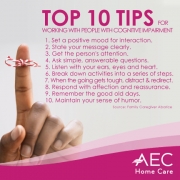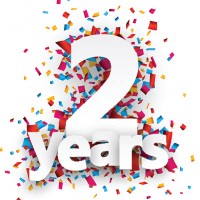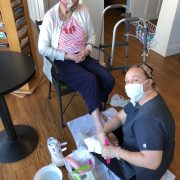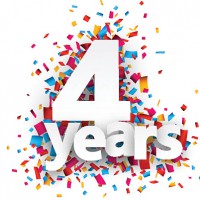Caregiver Tip Tuesday: Proper Lifting Techniques
You’re new on the job, you’re well trained, you got that PMA (Positive Mental Attitude), you can do anything, you’re young, strong and fit.. then you go and try to help Mrs. Johnson onto the commode and you feel a slight tug in your lower back. Of course you don’t think of it while at work then you yawn and stretch and then you feel it.. your back is ripped to shreds, you cant stand up right and you’re hobbling around worse than Mr. Davis who has a white knuckle death grip on his walker. What the heck happened!?
Sorry to say this may have become a life long injury that pops up at the most inopportune times. Injuries to ligaments sometimes take years to heal and sometimes they have a way to keep reinjuring themselves so that you never heal for as long as you live. This is why older people complain about sciatica, knee pain, and suffer from poor posture or scoliosis to alleviate the pain. Now you, as a young caregiver, have just joined the club and put yourself out on the injured reserve and possibly out of work, or at the worst.. out of a promising career helping other people.
So let’s roll this back to right before you’re helping Mrs. Johnson up. Did you square up your back, or was it bent? Were you knees bent, or were they locked in place and you’re leaning forward beyond your center of gravity? Were your feet planted firmly on the ground, or were they at an angle not supporting your weight? We must remember the important thing about lifting heavy things is ‘No BLTs’ that’s as described as no Bending over, no Lifting while bent over, and you must especially remember never ever Twist your torso while turning. If you can, keep the object or person close you you, use your stomach muscles and back muscles to lock in your spin into a good posture. And if you have to turn, do it with your feet. Or even better still try to make the resident go under their own power as much as possible and try to support them and use leverage to get them into a good position to transfer. Better than all of that, if you have doubts.. don’t hesitate to use a mechanical lift device built specifically for this purpose. If you need training on the lift.. ask your administrator, and maybe check out an instructional video from the manufacturer on the web after the training session for full understanding.
We wish you good health, and please remember to follow good lifting techniques in any situation. Even if it’s to pick up a tissue off the floor, saving your back will save you years of pain down the road and help you provide the most excellent care you can provide in your career.

